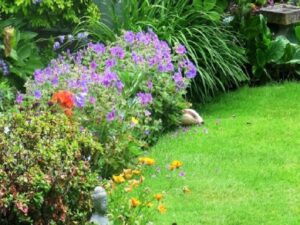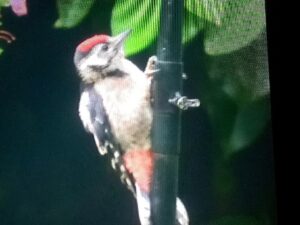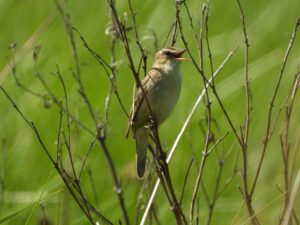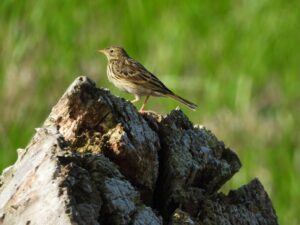Hugh’s News – 27 June 2020
I know that one or two of you are aware of the presence of Quails on Wirral this year. Quails are small game birds that are migratory, spending the winter in southern Europe and Africa. They are most common in the south and east of England, and we occasionally have a few birds passing through in the Spring, especially on the Dee marshes, but they usually soon move on A few birds reportedly breed in Cheshire and Wirral, but that is quite rare.
However this year – probably because of the long settled spell of weather in April and May – there was quite an influx locally, with birds reported calling at Parkgate and Denhall (and maybe other sites). There has also been two (male) birds heard, and very occasionally individuals seen briefly, in the field by the RAF Monument on Saughall Massie Road. Quail can be incredibly hard to see, even when they are very close; but their distinctive “wet my lips” calls carry a long way. Be aware however that they are great ventriloquists – you think the calls are coming from one spot, only for a bird to appear from a totally different direction! If you are lucky, you can get a glimpse when they fly low across the crop. As the Saughall Massie birds are still there now, there is a good chance of breeding.
Meanwhile, back in Barry’s garden! Attached is a photo of a non-avian visitor he saw the other day. Peering out of the flower bed was a badger! Would you believe it?! He also reports that he has seen fledglings from 12 different species and lots of them, including a Great-spotted Woodpecker. Can anyone beat that? He sees 23 species on average per week and 41 in total all since March 15th. Yet he has not seen a single House Martin and only rarely a Swift or Swallow. Birds can be fickle (Also, you cannot tempt them to garden feeders!).
Bill sent in a couple of pictures of birds he saw near Burton Point – a Sedge Warbler and a Meadow Pipit.
It is amazing what you sometimes discover on the web. In Yemen last year, a migrating Griffon Vulture fitted with a GPS transmitter, helping researchers in Bulgaria understand its movements, was captured having been mistaken for a ‘spy’ by militants in the ongoing conflict in Yemen. Luckily the Yemenis were persuaded that vulture was not there to spy on them and he was released.
Sadly the detention of this Griffon Vulture is not the first example of the misunderstandings over animal tags in conflict areas. There are countless examples of migratory birds fitted with tags being victims of the tensions between conflicting forces in the Middle East. two years ago another Griffon Vulture was detained in Lebanon, which was subsequently returned to Israel. White storks with tags have also been “detained” in Egypt. Migration can be hazardous enough, without being detained for spying!
Hugh Stewart



